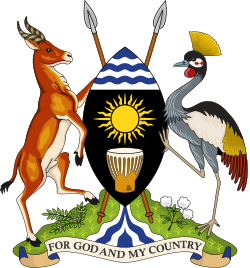This article needs additional citations for verification .(April 2021) |
 |
|---|
Uganda is divided into (from largest to smallest):
- 4 administrative regions
- 15 sub-regions
- 121 districts
- 146 counties, one city council, and thirteen municipalities
- sub-counties
- parishes and villages
The sub-regions include, but are not necessarily limited to: Acholi, Ankole, Buganda, Bugisu, Bukedi, Bunyoro, Busoga, Elgon, Karamoja, Kigezi, Lango, Rwenzori, Sebei, Teso, Toro, and West Nile.
All the subdivisions are officially united and served by the national government body, the Uganda Local Governments Association (ULGA). [1]
ISO 3166-2:UG gives three letter codes for the districts.
Parallel with the state administration, five traditional Bantu kingdoms have some degree of mainly cultural autonomy. These kingdoms are Toro, Busoga, Bunyoro, Buganda, and Rwenzururu.